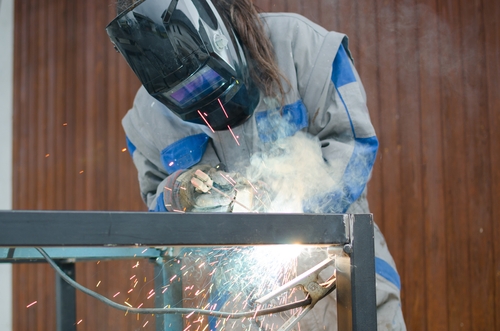
New Zealand’s manufacturing sector is continuing to show upward momentum since the start of 2013, according to the latest BNZ - BusinessNZ Performance of Manufacturing Index (PMI).
BusinessNZ’s executive director for manufacturing Catherine Beard said that it was encouraging to see the February result exhibit stronger activity, most likely due to certain factors in the economy now starting to play out.
“Comments received from respondents who show increased activity are often associated with construction, such as the Canterbury rebuild or increased renovation work throughout the country. Given a large proportion of New Zealand’s domestic manufacturing activity is dependent on the construction sector, stronger demand for products such as paint, concrete, fixtures/fittings and related equipment will obviously provide the sector with a welcome boost.”
BNZ senior economist Craig Ebert says this month's positive result reinforces the bank's view that manufacturing is not "in crisis".
"The figures speak for themselves. The way some people are talking, we should be witnessing a very weak, to plunging, PMI. In fact, it's improved to a more positive level. While employment is still lagging, with production being the fastest growing in more than eight years, we have good reason to expect a pick-up in jobs to follow, especially with new orders picking up as well as they are.
"The headline numbers were certainly very encouraging. The summary PMI result – of a seasonally adjusted 56.2, following 55.2 in January – puts it comfortably above the 52.3 average since inception (August 2002). One swallow doesn’t make a summer. But two increase the chances."
Momentum appeared even stronger when it came to the production component of the PMI. It leapt to 61.4 (for the record, the fastest in more than eight years). The new orders component enlarged to 58.2, from 56.3. "This is obviously a good pointer to ongoing production gains."
Ebert said the strength was all the more welcome, "after the less-than-overwhelming data" in last week’s December quarter manufacturing survey. "While its sales volumes were up a good-looking 1.5%, inventories were soft. The implications for non-food manufacturing production were slightly negative. Even adding in our estimates of booming food processing in the (pre-drought) December quarter left us judging a 0.3% increase for manufacturing output in Q4 overall."
He said a better result in Q1 manufacturing growth was "given purpose" by today’s PMI. However, its strength was not without a number of caveats.
"One is that the PMI momentum is not evenly spread around. Indeed, the gap between the best and worst performing industries remains relatively high. The best (based on a three-month rolling average) was food beverage and tobacco manufacturing, with 66.0. This might, to some extent at least, reflect greater than normal meat processing, on account of the drought, although the dry weather will, by the same token, be crimping the manufacture of dairy products."
The other strong industry performers right now according to the latest PMI are non-metallic mineral products (61.6) and “other” manufacturing (61.6). But spare a thought for printing publishing and recorded media (42.9), textile clothing and footwear (43.4) and metal product manufacturing (44.0).
It was also the case in February that only the very largest of firms were going for broke. Businesses employing more than 100 staff registered a PMI of a whopping 76.3. Micro firms (1 to 10) were at 53.7, small-to-medium (11-50) at 51.0 while medium-to-large sized firms (51-100) were at 50.0.
The other caveat to the latest PMI, Ebert said is that its reported production increases, overall, are not translating into more jobs (yet). February’s employment index, while improved at 50.1, only really stabilized, having been below the breakeven mark of 50.0 for the prior 8 months.
"Nonetheless, we have to take today’s PMI as encouraging. It outlines that production is picking up, and will keep doing so if new orders are any guide. This, in due course, can be expected to drive a recovery in employment. The way some people are talking, we should be witnessing a very weak, to plunging, PMI. In fact, it’s improved to a more positive level."


We welcome your comments below. If you are not already registered, please register to comment.
Remember we welcome robust, respectful and insightful debate. We don't welcome abusive or defamatory comments and will de-register those repeatedly making such comments. Our current comment policy is here.